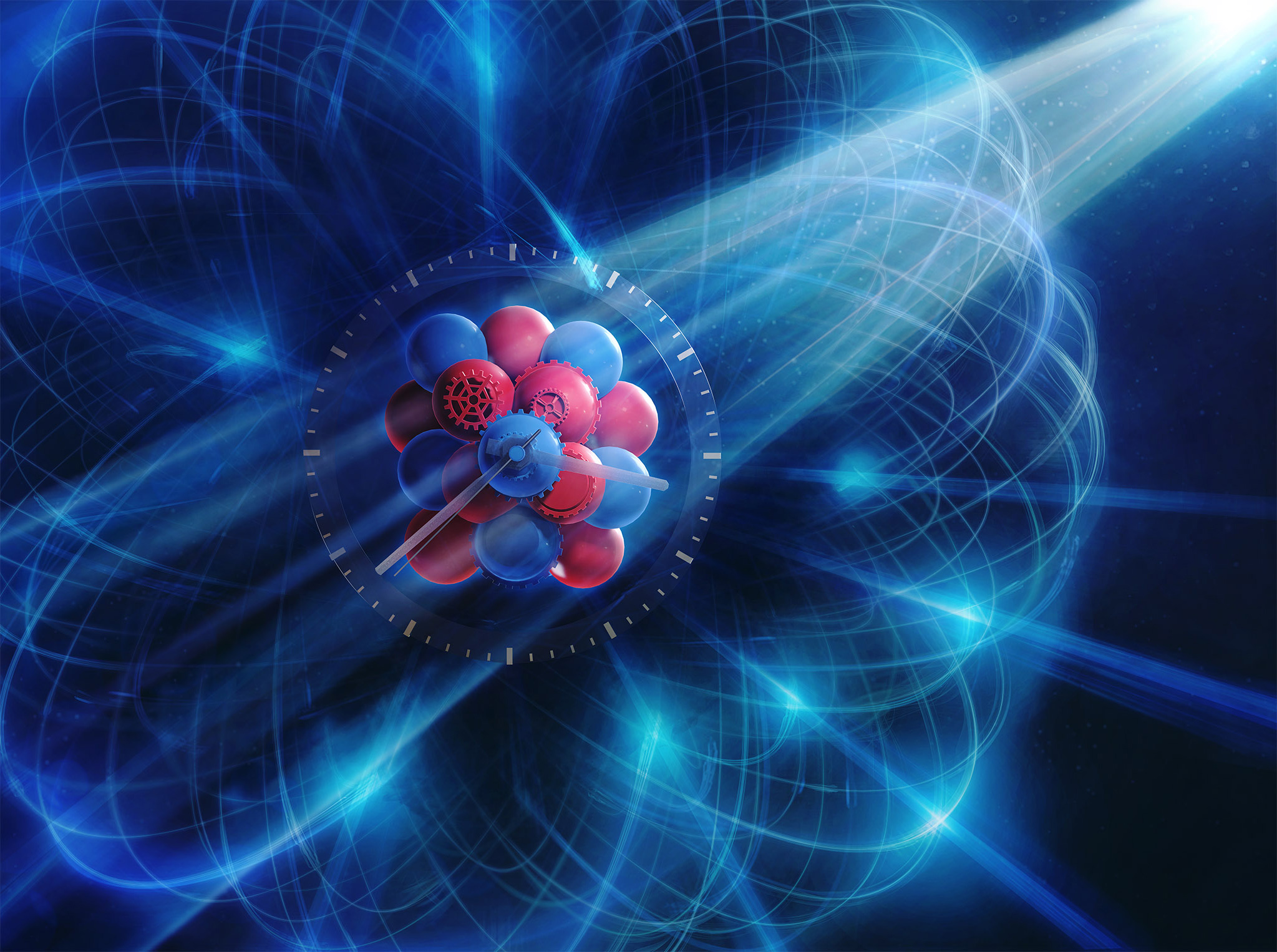
An international research team involving Dr. Olga Kocharovskaya, a distinguished professor in the Department of Physics and Astronomy at Texas A&M University, has taken a major step toward development of a new generation of atomic clocks with mind-blowing potential affecting fundamental science and various industries, from nuclear physics to satellite navigation and telecommunications.
The team’s work, led by Argonne National Laboratory senior physicist Dr. Yuri Shvyd'ko, for the first time resonantly excited the scandium-45 nuclear isomer with the world's brightest X-ray pulses at the European XFEl (EuXFEL) X-ray laser facility and determined the position of this nuclear resonance with unprecedented accuracy. Their findings are reported in the journal Nature, both online and in the Oct. 19 print edition.
“Atomic clocks, such as the caesium-133 clock or the strontium-87 clock, rely on oscillations of electrons in an atom, which can oscillate at highly reliable frequencies when excited by microwave or optical radiation,” explained Kocharovskaya, principal investigator of the National Science Foundation (NSF) project that initiated and supported this research.
Scandium, an element used in aerospace components and sports equipment, enables an accuracy of one second in 300 billion years, or roughly a thousand times more precision than the current standard atomic clock. The combination of scandium-45 and ultra-bright X-ray pulses brings scientists a decisive step closer to creation of the first-ever nuclear clock that could harness the oscillation of the atomic nucleus rather than its electron shell.
“For purposes that demand such precision, including the study of certain aspects of relativity, gravitational theory and other physical phenomena such as dark matter, the nuclear clock is the ultimate timepiece," said Dr. Xiwen Zhang, a postdoctoral researcher in Kocharovskaya's group who co-authored the paper.
With their accuracy of up to one part in 10,000,000,000,000,000,000, Texas A&M physicist Dr. Grigory V. Rogachev notes that nuclear clocks could usher in a new era of precision timekeeping and enable transformative applications in myriad areas, resulting in a host of applications and advances.
”Humanity has been on the lookout for the technology to make the most precise clocks since the dawn of the modern ages,” said Rogachev, head of Texas A&M Physics and Astronomy and a member of the Texas A&M Cyclotron Institute. “At present, atomic clocks are the best. Dr. Kocharovskaya and her collaborators are now making the first step toward a new, breakthrough technology. Her research opens a new pathway to utilize the unique properties of the scandium-45 isotope to create the most precise clock ever — the nuclear clock. This advancement may have exciting applications in extreme metrology, ultra-high spectroscopy and potentially numerous other fields.”
Kocharavskaya’s research interests during the past decade have been focused on extending the field of traditional quantum optics — which she describes as dealing with controllable resonant interactions between optical photons and atomic transitions — into the emerging field of nuclear/x-ray quantum optics focused on control of resonant interaction between x-ray photons and nuclear transitions. In the process, she identified scandium-45 with its long-lived first-excited energy state as the superior candidate both for quantum nuclear storage and the nuclear clock. The main question, she says, was whether it was feasible to reach this state with available x-ray sources.
Together with Shvyd’ko, who had envisioned the high potential of scandium-45 for super-resolution-coherent-forward nuclear spectroscopy along with a possibility of its resonant excitation by X-rays from an emerging new generation of accelerator-based facilities 30 years ago, Kocharovskaya wrote a proposal to the NSF aimed at resonant excitation of a scandium-45 nuclear isomer using X-ray pulses.
“Initially it received mixed reviews, as it was considered a high-risk/high payoff project, but eventually, it was funded, allowing us to plan the experiment at EuXFEL,” said Kocharovskaya, a member of the Texas A&M Institute for Quantum Science and Engineering.
Kocharovskaya credits Shvyd'ko as not only the leader of the group’s research but also an inspiration for the entire team. From coordinating the efforts of all the groups entering every detail of the project to running weekly Zoom meetings discussing the multiple challenges and progress in preparation for the experiment, she says his leadership and hard work provided a tangible example of precisely what it means to see a long-term scientific dream become a reality. In addition, she notes that the project would not be successful without the major contributions of their German colleagues: Dr. Ralf Röhlsberger at DESY and the Helmholtz Institute, Jena; Dr. Jörg Evers at the Max Planck Institute for Nuclear Physics, Heidelberg; and Drs. Anders Madsen and Gianluca Geloni at EuXFEL, along with the groups they each lead.
“As soon as the resonance was seen within the first several hours of the data collection, we all joyfully celebrated this success,” she added. “It was rewarding for all of us, but especially for Yuri, who realized a high scientific potential of scandium-45 for super-resolution nuclear spectroscopy and the possibility to excite it with modern accelerator-based X-ray sources 33 years ago.”
Never one to rest on their laurels, the team already is focused on next steps and goals, starting with determining the resonant transition energy with even higher accuracy and measuring the exact lifetime of an isomer state. In addition, there’s also observation of the coherent forward nuclear scattering and measuring the linewidth of the nuclear transition.
“The next two steps can be achieved in a relatively simple way,” Zhang acknowledged. “While the third step is extremely challenging, it's absolutely critical in order to estimate a projected accuracy and stability of any future nuclear clock. As a group and as a broader research team, we all look forward to the challenge.”
